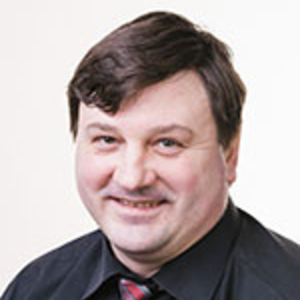Study
The course contains the basic concept and general methods of quantum-mechanical modeling of nanosystems. Practical lessons are devoted to the application of modern software packages, such as “PC GAMESS”, “GAUSSIAN”, “HYPER CHEM”, “QUANTUM-ESPRESSO”, “GPAW”, “MOPACK”, “MERCURY” to modeling of the optimum geometry, electronic structure and optical response of periodic and non-periodic systems.
In particular, the course can be divided into the following parts:
1. Modeling of many-electron atoms structure.
2. Modeling of molecular systems.
3. Realization of density functional theory for computation of optimal geometry and electronic structures of periodic and non-periodic systems.
4. Time-dependent density functional theory and their application to calculation of optical response of periodic and non-periodic systems.
5. Practical training on the basic techniques of the modern computer packages of quantum-mechanical modeling: “PC GAMESS”, “GAUSSIAN”, “HYPER CHEM”, “QUANTUM-ESPRESSO”, “GPAW”, “MOPACK”, “MERCURY”.
1. Introduction. Systems of independent particles: bosons and fermions, and their statistic.
2. Modeling of many-electron atoms structure.
3. Modeling of molecular systems
4. Realization of density functional theory for computation of optimal geometry and electronic structures of periodic and non-periodic systems.
5. Time-dependent density functional theory and their application to calculation of optical response of periodic and non-periodic systems.
6. Practical training on the basic techniques of the modern computer packages of quantum-mechanical modeling: “PC GAMESS”, “GAUSSIAN”, “HYPER CHEM”, “QUANTUM-ESPRESSO”, “GPAW”, “MOPACK”, “MERCURY”.
Basic
- K.I. Ramachandran, G. Deepa, K. Namboori. Computational Chemistry and Molecular Modeling. «Springer», 2008.
- И.М.Ибрагимов, А.Н. Ковшов, Ю.Ф. Назаров. Основы компьютерного моделирования наносистем. Лань. 2010.
- Л. Цюлике. Квантовая химия. «Мир», М. 1976.
- Р.Маттук, Фейнмановские диаграммы в проблеме многих тел. «Мир», М. 1969.
- С. Реймс, Теория многоэлектронных систем, «Мир», М. 1976.
- G.D. Mahan, Many Particle Physics, 2000.
- P. Coleman, Introduction to Many-Body Physics, Cambridge University Press, 2015
Additional
- I.Lindgren, J.Morrison. Atomic many-body theory. Springer. 1982.
- A.F.Fetter, J.D.Walecka. Quantum theory of many-particle systems. McGraw Hill Book Company. 1971.
- Дж. Слэтер. Электронная структура молекул. «Мир», М. 1965 г.
- H. Bruus, K. Flensberg, Many-body quantum theory in condensed matter physics, 2002
- Д.Пайнс. Проблема многих тел. «Иностранная литература», М.1963.
- Теория неоднородного электронного газа. Под ред. С.Лундквиста и Н.Марча. «Мир», М. 1987.
- Д.Таулес. Квантовая механика систем многих частиц. «Мир», М. 1975

